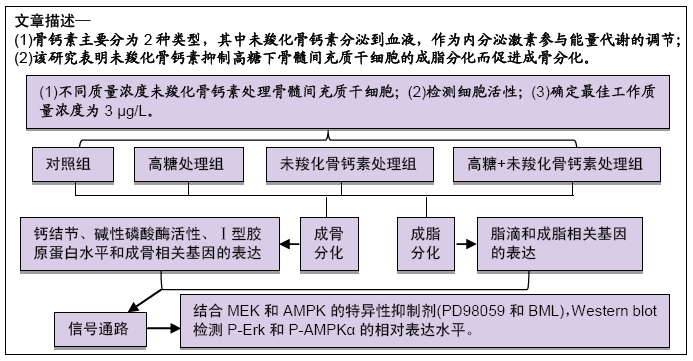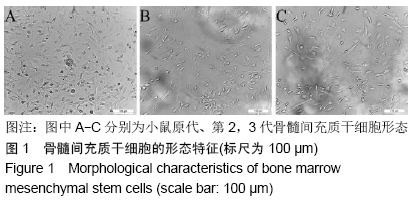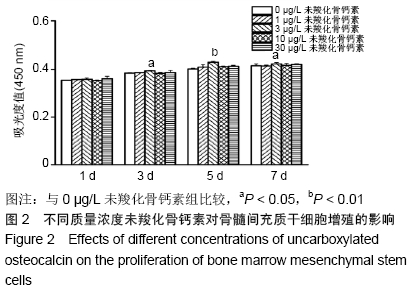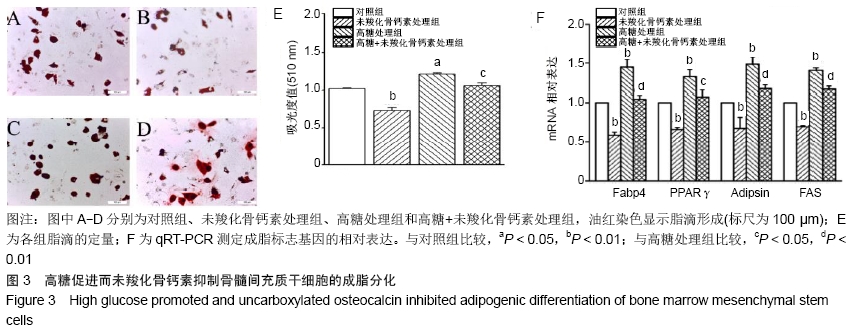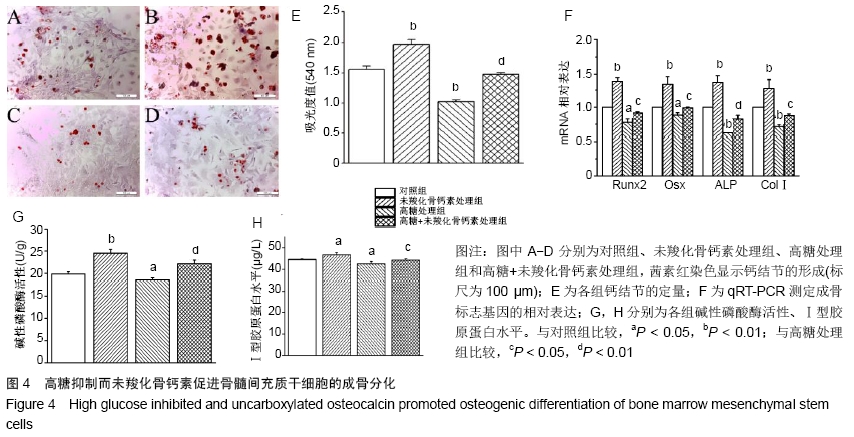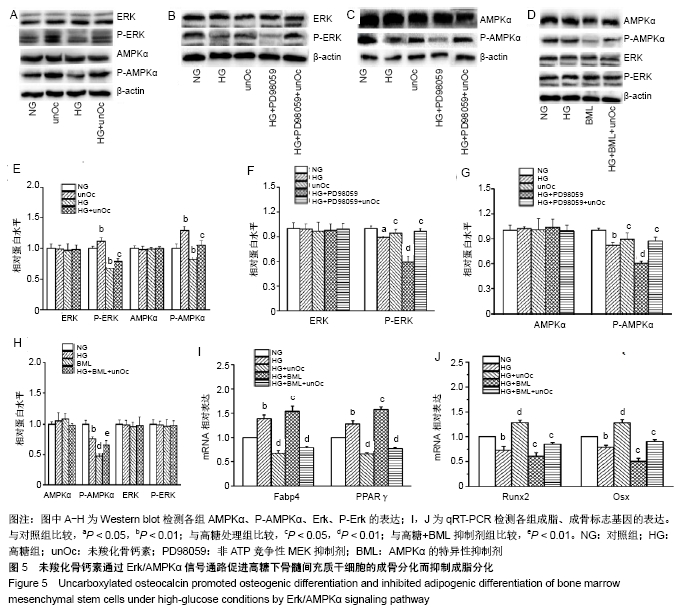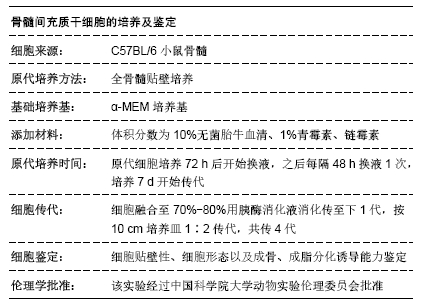[1] YAMAGISHI S, NAKAMURA K, INOUE H. Possible participation of advanced glycation end products in the pathogenesis of osteoporosis in diabetic patients. Med Hypotheses. 2005;65(6):1013-1015.
[2] HOUGH FS, PIERROZ DD, COOPER C, et al. MECHANISMS IN ENDOCRINOLOGY: Mechanisms and evaluation of bone fragility in type 1 diabetes mellitus. Eur J Endocrinol. 2016;174(4):R127-138.
[3] 亢晨,张斌,孙瑶.骨代谢紊乱与糖尿病:有价值的防治并举[J].中国组织工程研究, 2014, 18(20): 3263-3266.
[4] MARIA D, SAMSONRAJ RM, MUNMUN F, et al. Biological effects of melatonin on osteoblast/osteoclast cocultures, bone, and quality of life: Implications of a role for MT2 melatonin receptors, MEK1/2, and MEK5 in melatonin-mediated osteoblastogenesis. Journal of Pineal Research. 2018;64(3): e12465.
[5] KHANDUKER S, AHMED R, KHONDKER F, et al. Electrolyte Disturbances in Patients with Diabetes Mellitus. Bangladesh J Med Biochem. 2017;10(1): 27-35.
[6] DIMEGLIO LA, IMEL EA. Calcium and phosphate: hormonal regulation and metabolism. Basic and Applied Bone Biology. 2014:261-282.
[7] PALERMO A, D'ONOFRIO L, BUZZETTI R, et al. Pathophysiology of Bone Fragility in Patients with Diabetes. Calcif Tissue Int. 2017;100(2): 22-132.
[8] NAPOLI N, CHANDRAN M, PIERROZ DD, et al. Mechanisms of diabetes mellitus-induced bone fragility. Nat Rev Endocrinol. 2017; 13(4):208-219.
[9] HARDOUIN P, MARIE PJ, ROSEN CJ. New insights into bone marrow adipocytes: Report from the First European Meeting on Bone Marrow Adiposity (BMA 2015). Bone. 2016;93:212-215.
[10] LI J, ZHANG H, YANG C, et al. An overview of osteocalcin progress. J Bone Miner Metab. 2016;34(4):367-379.
[11] OLDKNOW KJ, MACRAE VE, FARQUHARSON C. Endocrine role of bone: recent and emerging perspectives beyond osteocalcin. J Endocrinol. 2015;225(1):R1-19.
[12] TANGSEEFA P, MARTIN SK, FITTER S, et al. Osteocalcin-dependent regulation of glucose metabolism and fertility: Skeletal implications for the development of insulin resistance. J Cell Physiol. 2018;233(5): 769-3783.
[13] NG KW. Regulation of glucose metabolism and the skeleton. Clin Endocrinol (Oxf). 2011;75(2):147-155.
[14] BONNEAU J, FERLAND G, KARELIS AD, et al. Association between osteocalcin gamma-carboxylation and insulin resistance in overweight and obese postmenopausal women. J Diabetes Complications. 2017; 31(6):1027-1034.
[15] GUEDES JAC, ESTEVES JV, MORAIS MR, et al. Osteocalcin improves insulin resistance and inflammation in obese mice: Participation of white adipose tissue and bone. Bone. 2018;115:68-82.
[16] LIU J, YANG J. Uncarboxylated osteocalcin inhibits high glucose-induced ROS production and stimulates osteoblastic differentiation by preventing the activation of PI3K/Akt in MC3T3-E1 cells. Int J Mol Med. 2016;37(1):173-181.
[17] ZHANG Y, YANG JH. Activation of the PI3K/Akt pathway by oxidative stress mediates high glucose-induced increase of adipogenic differentiation in primary rat osteoblasts. J Cell Biochem. 2013;114(11): 595-2602.
[18] AMBROSI TH, SCIALDONE A, GRAJA A, et al. Adipocyte Accumulation in the Bone Marrow during Obesity and Aging Impairs Stem Cell-Based Hematopoietic and Bone Regeneration. Cell Stem Cell. 2017;20(6):771-784.
[19] MIRANDA C, GINER M, MONTOYA MJ, et al. Influence of high glucose and advanced glycation end-products (ages) levels in human osteoblast-like cells gene expression. BMC Musculoskelet Disord. 2016;17:377.
[20] OKAZAKI R, INOUE D. Mechanism for the Development of Bone Disease in Diabetes: Abnormal Glucose Metabolism. Musculoskeletal Disease Associated with Diabetes Mellitus.2016:43-61.
[21] LIANG Y, LIU Y, LAI W, et al. 1,25-Dihydroxy vitamin D3 treatment attenuates osteopenia, and improves bone muscle quality in Goto-Kakizaki type 2 diabetes model rats. Endocrine. 2019;64(1): 84-195.
[22] WANG C, MENG H, WANG X, et al. Differentiation of Bone Marrow Mesenchymal Stem Cells in Osteoblasts and Adipocytes and its Role in Treatment of Osteoporosis. Med Sci Monit. 2016;22:226-233.
[23] AKABERI S, LINDERGÅRD B, SIMONSEN O, et al. Impact of parathyroid hormone on bone density in long-term renal transplant patients with good graft function. Transplantation. 2006;82(6):749-752.
[24] KANAZAWA I, TANAKA S, SUGIMOTO T. The Association Between Osteocalcin and Chronic Inflammation in Patients with Type 2 Diabetes Mellitus. Calcif Tissue Int. 2018;103(6):599-605.
[25] KIM KM, LIM S, MOON JH, et al. Lower uncarboxylated osteocalcin and higher sclerostin levels are significantly associated with coronary artery disease. Bone. 2016;83:178-183.
[26] XUAN Y, SUN LH, LIU DM, et al. Positive association between serum levels of bone resorption marker CTX and HbA1c in women with normal glucose tolerance. J Clin Endocrinol Metab. 2015;100(1): 74-281.
[27] SHIN DW, KIM SN, LEE SM, et al. (-)-Catechin promotes adipocyte differentiation in human bone marrow mesenchymal stem cells through PPAR gamma transactivation. Biochem Pharmacol. 2009;77(1): 125-133.
[28] SIMANN M, LE BLANC S, SCHNEIDER V, et al. Canonical FGFs Prevent Osteogenic Lineage Commitment and Differentiation of Human Bone Marrow Stromal Cells Via ERK1/2 Signaling. J Cell Biochem. 2017;118(2):263-275.
[29] GU H, HUANG Z, YIN X, et al. Role of c-Jun N-terminal kinase in the osteogenic and adipogenic differentiation of human adipose-derived mesenchymal stem cells. Exp Cell Res. 2015;339(1):112-121.
[30] ABDALLAH BM, ALZAHRANI AM, KASSEM M. Secreted Clusterin protein inhibits osteoblast differentiation of bone marrow mesenchymal stem cells by suppressing ERK1/2 signaling pathway. Bone. 2018;110: 221-229.
[31] KIM H, SAKAMOTO K. (-)-Epigallocatechin gallate suppresses adipocyte differentiation through the MEK/ERK and PI3K/Akt pathways. Cell Biol Int. 2012;36(2):147-153.
[32] WU W, YIN Y, XU K, et al. Knockdown of LGALS12 inhibits porcine adipocyte adipogenesis via PKA-Erk1/2 signaling pathway. Acta Biochim Biophys Sin (Shanghai). 2018;50(10):960-967.
[33] WANG YG, QU XH, YANG Y, et al. AMPK promotes osteogenesis and inhibits adipogenesis through AMPK-Gfi1-OPN axis. Cell Signal. 2016;28(9):1270-1282.
[34] ZENG Y, PU X, YANG J, et al. Preventive and Therapeutic Role of Functional Ingredients of Barley Grass for Chronic Diseases in Human Beings. Oxid Med Cell Longev. 2018;2018:3232080.
[35] MA C, LI G, HE Y, et al. Pronuciferine and nuciferine inhibit lipogenesis in 3T3-L1 adipocytes by activating the AMPK signaling pathway. Life Sci. 2015;136:120-125.
[36] LIU B, YANG T, LUO Y, et al. Oat β-glucan inhibits adipogenesis and hepatic steatosis in high fat diet-induced hyperlipidemic mice via AMPK signaling. Journal of Functional Foods. 2018;41:72-82.
|
